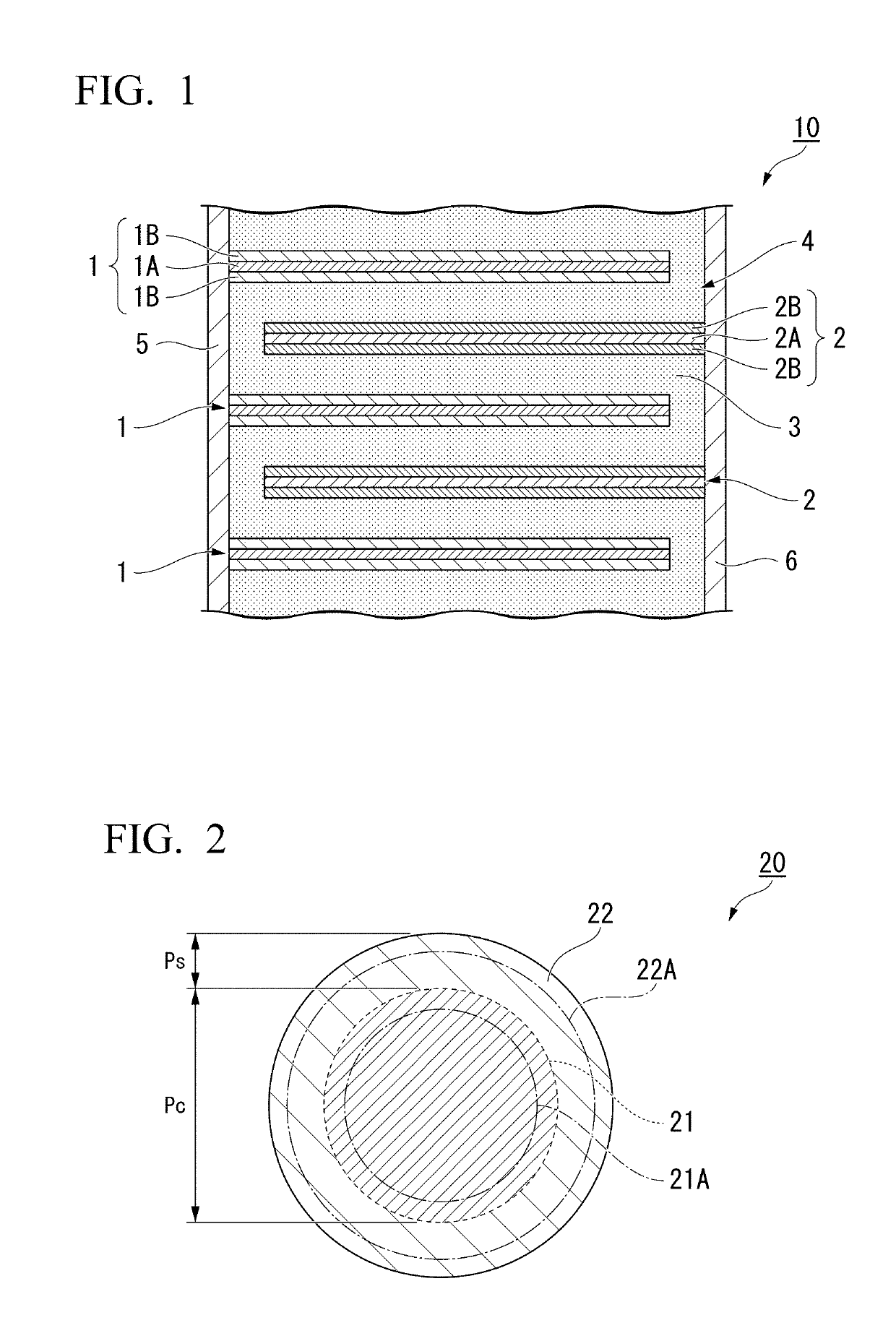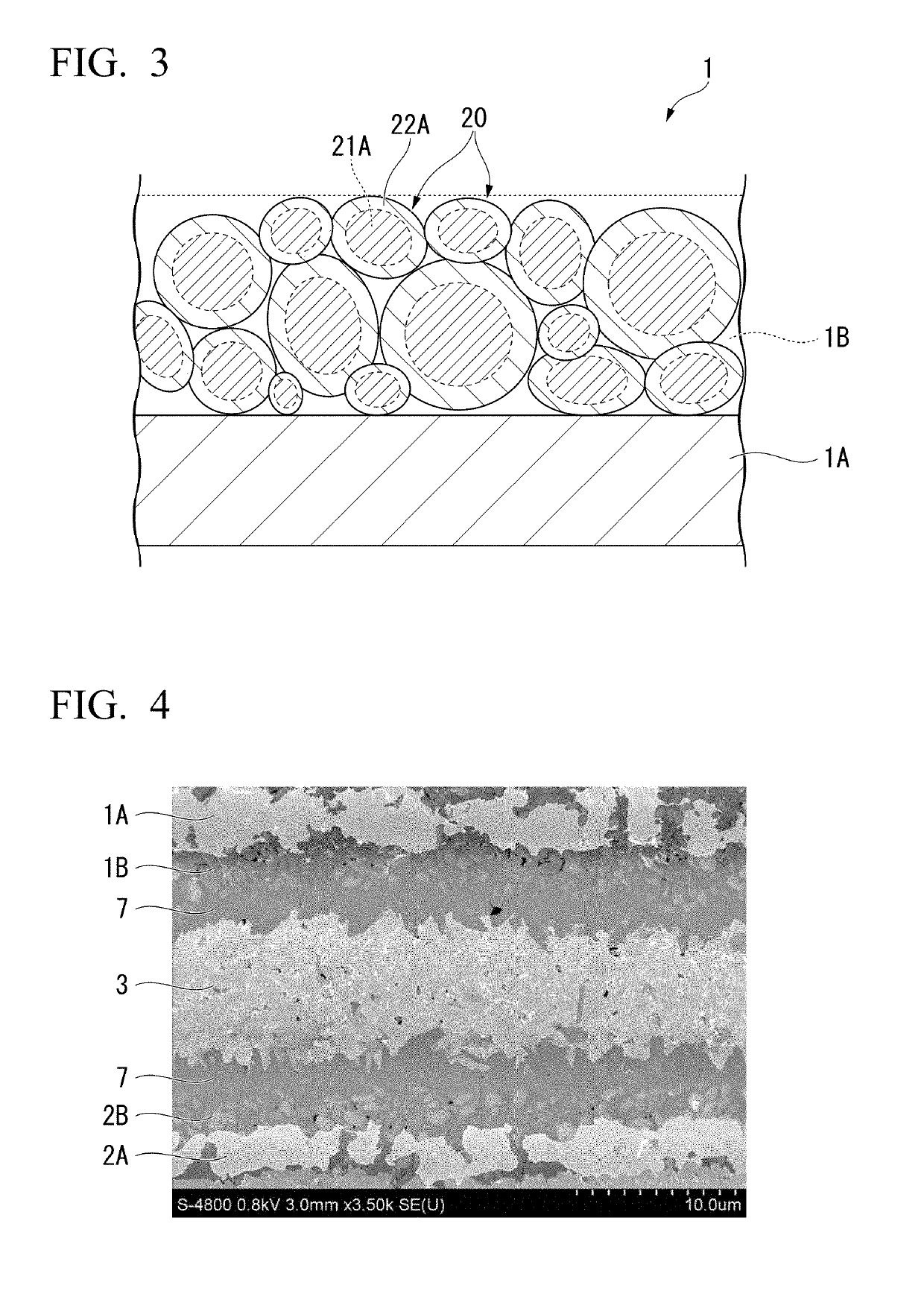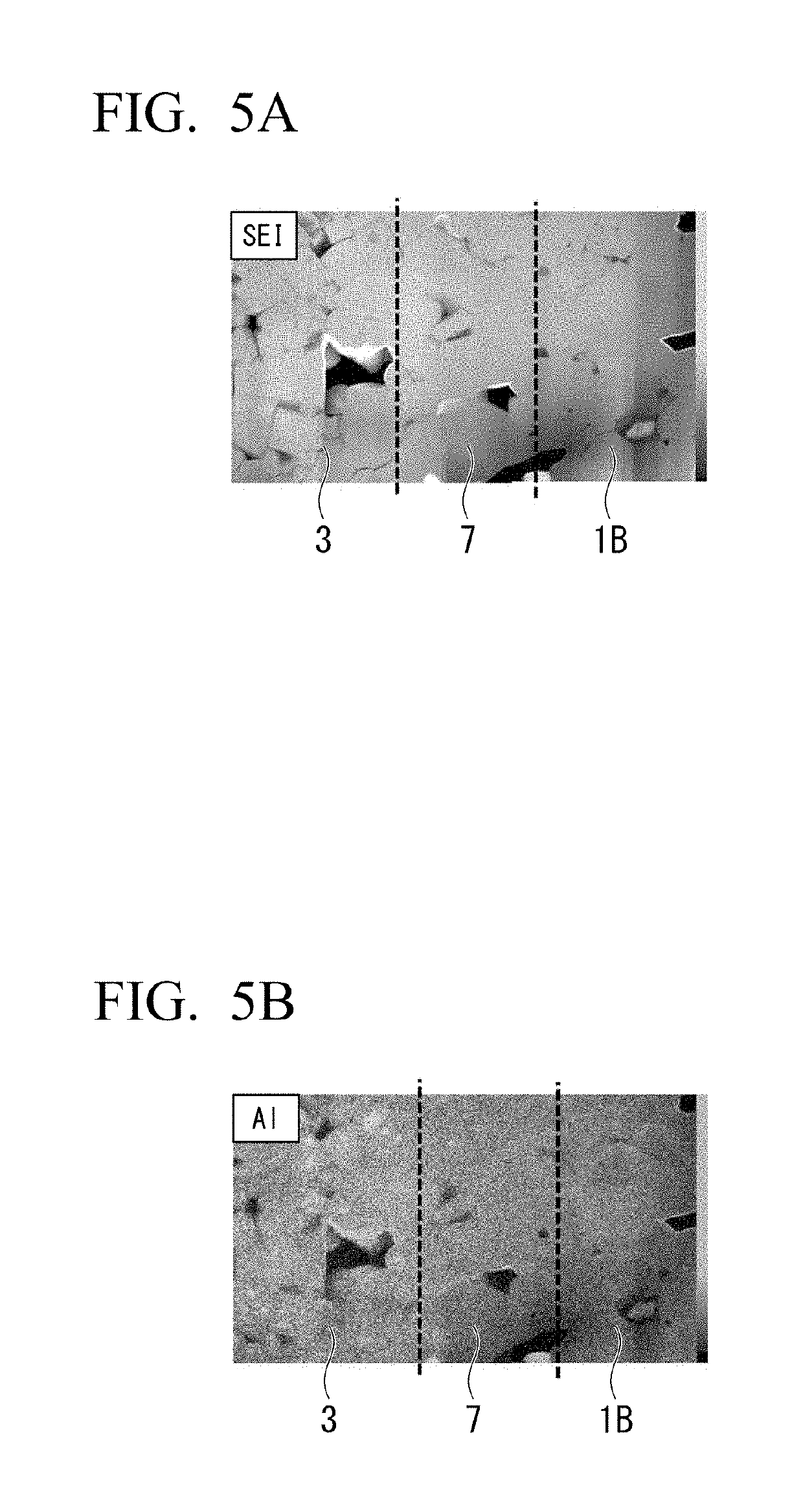Active material and all-solid-state lithium-ion secondary battery
- Summary
- Abstract
- Description
- Claims
- Application Information
AI Technical Summary
Benefits of technology
Problems solved by technology
Method used
Image
Examples
example 1
[0123]Active material pieces were prepared by a solid-phase reaction method. First, Li2CO3, Al2O3, V2O5, TiO2, and NH4H2PO4 were prepared as materials that form the basis of the active material. These were wet-mixed with a ball mill for 16 hours. A sample after the wet mixing was dehydrated and dried and calcined in air at 800° C. for 2 hours. Then, the calcined product was subjected to wet grinding with a ball mill for 16 hours, and then dehydrated and dried. The obtained powder was calcined in a gaseous mixture atmosphere of nitrogen and 3% hydrogen at 800° C. for 2 hours. Therefore, an active material having a core region and a shell region was obtained.
[0124]The obtained active material was made into a paste to produce green sheets of negative electrode active material and positive electrode active material. In addition, in the same manner, materials serving as the basis for an interlayer, a current collector, and a solid electrolyte were produced by a solid-phase reaction metho...
example 2
[0140]Example 2 was different from Example 1 in that a composition of the solid electrolyte was different from that of the positive electrode active material layer and the negative electrode active material layer. Other conditions were the same as in Example 1. The compositions of each layer of an all-solid-state lithium-ion secondary battery in Example 2 were as follows.
[0141]
[0142]A positive electrode current collector 1A and a negative electrode current collector 2A: a mixture of Cu and the following active material pieces
[0143]A positive electrode active material layer 1B and a negative electrode active material layer 2B
[0144]A core region 21A: Li2.9V1.65Al0.03E0.40P2.9O12-x
[0145]A shell region 22A: Li2.4V1.05Al0.06Ti0.90P2.95O12-x
[0146]A solid electrolyte 3: LiTi2P3O12
[0147]A battery capacity of the all-solid-state lithium-ion secondary battery of Example 2 was 88.6 μAh, and an internal resistance was 2.11 kΩ. The all-solid-state lithium-ion secondary battery of Example 2 ha...
examples 3 and 4
[0148]All-solid-state lithium-ion secondary batteries of Example 3 and Example 4 were different from Example 1 in that a compositional ratio at the time of producing active material pieces by a solid-phase reaction method was changed. Other conditions were the same as in Example 1. Specifically, a ratio of vanadium ions was changed, and ratios of other ion types were also changed accordingly.
[0149]As a result, compositions of each layer of the all-solid-state lithium-ion secondary batteries in Example 3 and Example 4 were as follows.
[0150]
[0151]A positive electrode current collector 1A and a negative electrode current collector 2A: a mixture of Cu and the following active material pieces
[0152]A positive electrode active material layer 1B and a negative electrode active material layer 2B
[0153]A core region 21A: Li2.8V2.0Al0.03Ti0.3P2.8O12-x
[0154]A shell region 22A: Li2.3V1.0Al0.07Ti1.10P2.83O12-x
[0155]A solid electrolyte 3: Li1.0V0.05Al0.12Ti2.0P2.87O12-x
[0156]
[0157]A positive ele...
PUM
 Login to View More
Login to View More Abstract
Description
Claims
Application Information
 Login to View More
Login to View More - R&D
- Intellectual Property
- Life Sciences
- Materials
- Tech Scout
- Unparalleled Data Quality
- Higher Quality Content
- 60% Fewer Hallucinations
Browse by: Latest US Patents, China's latest patents, Technical Efficacy Thesaurus, Application Domain, Technology Topic, Popular Technical Reports.
© 2025 PatSnap. All rights reserved.Legal|Privacy policy|Modern Slavery Act Transparency Statement|Sitemap|About US| Contact US: help@patsnap.com



